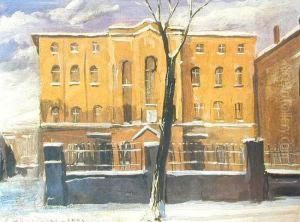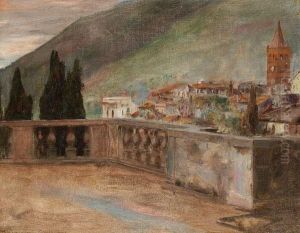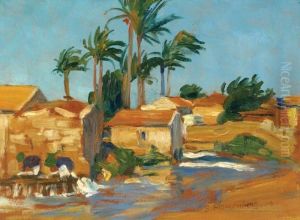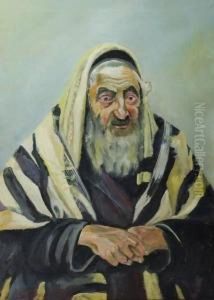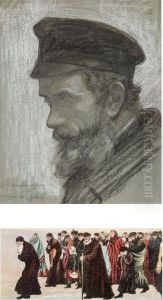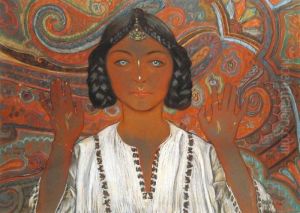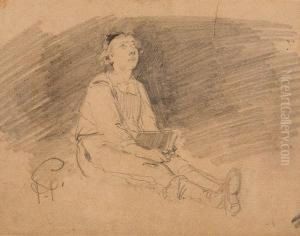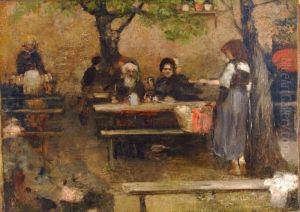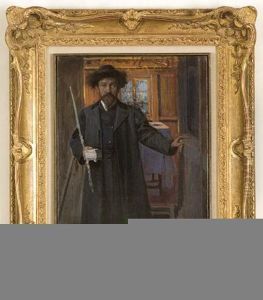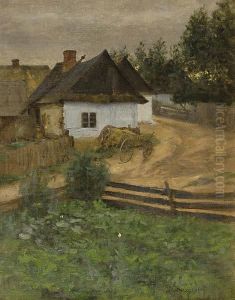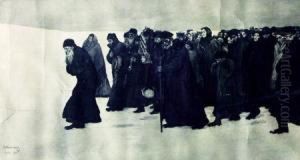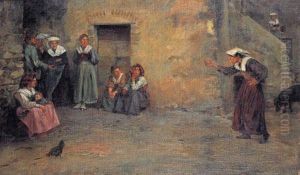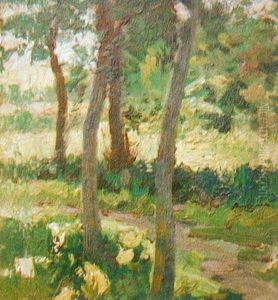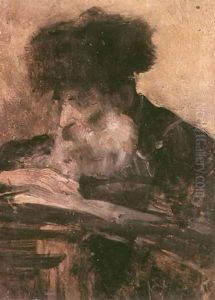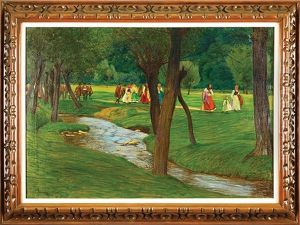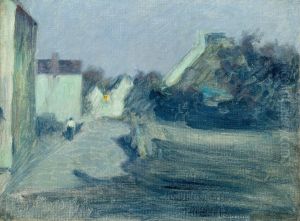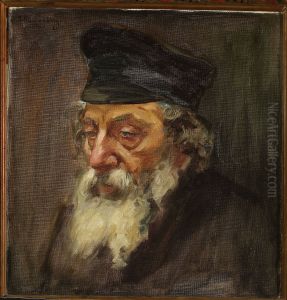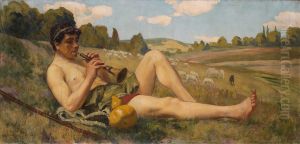Samuel Hirszenberg Paintings
Samuel Hirszenberg was a distinguished Polish-Jewish painter, born on February 22, 1865, in Łódź, which was then part of the Russian Empire and now is in Poland. He was known for his exceptional ability to blend social realism with Jewish themes, creating poignant and thought-provoking artworks that reflected the struggles and aspirations of Jewish people at the turn of the 20th century. Hirszenberg's early life in Łódź, within a community experiencing the throes of industrialization and social change, deeply influenced his artistic direction.
He pursued his education in the arts at the Academy of Fine Arts in Kraków, studying under Jan Matejko, a prominent Polish historical painter known for his monumental canvases depicting significant events in Polish history. Hirszenberg's education continued with further studies abroad, including time spent in Munich and Paris, cities that were central to the European art scene of the late 19th century. These experiences broadened his artistic vision, introducing him to various styles and movements, which he adeptly incorporated into his own unique narrative style.
Hirszenberg's works often grappled with themes of exile, displacement, and the quest for identity, reflecting the broader existential crisis facing European Jewry at the time. His most famous works, such as 'The Wandering Jew' and 'The Sabbath Rest', are emblematic of his deep engagement with Jewish culture and the socio-political issues affecting Jewish communities. These paintings are characterized by their haunting imagery, complex symbolism, and the profound sense of melancholy and longing they evoke.
Despite his significant contributions to art, Hirszenberg's life was marked by personal tragedy and struggles. He emigrated to Jerusalem in 1907, seeking a new beginning and inspired by the burgeoning Zionist movement. However, his time in Jerusalem was short-lived; he died on September 15, 1908, at the age of 43. His death marked the loss of a profoundly insightful artist who had begun to explore the intersection of Jewish identity and modernity in his work.
Samuel Hirszenberg's legacy is preserved in the collections of various museums and galleries, where his works continue to inspire and challenge audiences with their powerful commentary on identity, migration, and the human condition. Through his art, Hirszenberg remains a pivotal figure in the dialogue between Jewish history and modern artistic expression.
